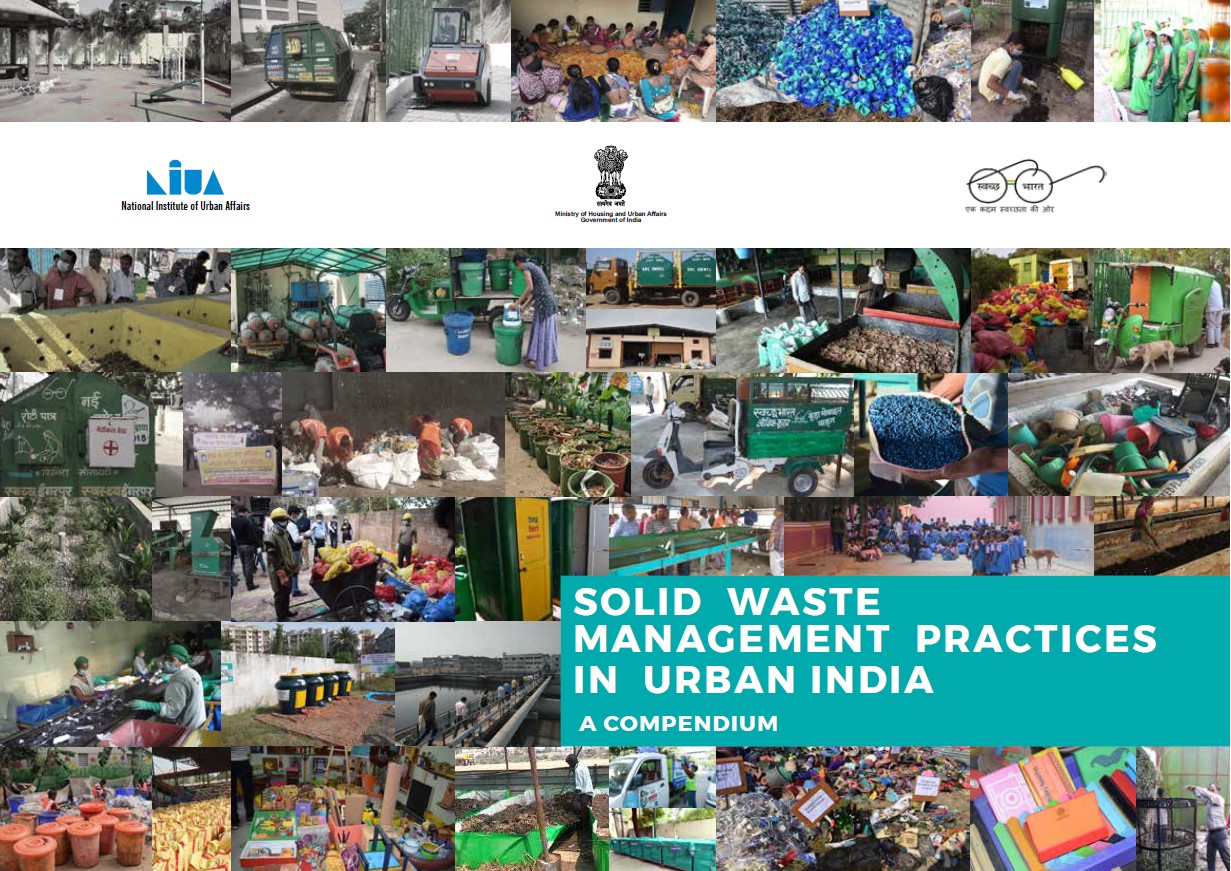Vermicomposting and Biogas plant at Mysore Zoo
Budget : 250 Lakhs (2.5 Crore)
Innovation Type (Process/ Product): Process
About the Project:
Sri Chamarajendra Zoological Gardens, popularly known as the Mysore zoo, has a daily garbage generation of around 1000 kg per day and comprises majorly of animal dung and some amount of food and horticulture waste. In Mysore zoo, bed vermicomposting method is adopted to process the organic waste. The dung from the enclosure is transported to the vermicomposting yard and heaped. Usually 8 to 10 days is sufficient to prepare one bed. The partially decomposed green material is placed over the heaped dung and mixed thoroughly and made into a bed. The zoo uses the Eudrilus eugenae species of earthworm, as they are prolific breeders with high multiplication rate. The bed site should be free from all debris. In the case of hard ground, flooring is generally not required. Otherwise, flooring with locally available stones is prepared for the purpose of sieving and packing. Regular watering is carried out twice a day for about 10 days, then once a day for another 10 days and then on alternate days until vermicomposting is complete. This process helps to soften the raw material and maintain the required moisture in the bed. The earthworms are released into the bed thus prepared. The population slowly builds up, with an initial contribution of approximately 10 kg of earthworms. After one month, black, granular, lightweight and humus-rich compost gets ready. To facilitate the separation of the worms from the compost, watering should be stopped 2 to 3 days before emptying of the beds. This forces about 80% of the worms to the bottom of the bed and the remaining worms can be removed by hand. The harvested vermicompost is then sieved to remove any debris and other waste before weighing and packing.4 In order to reduce the dependency on LPG cylinders, the Zoo Authorities has set up a biogas plant within the zoo premises adjoining the vermicomposting unit. The dung from the elephants forms 70% of the total waste produced in the zoo. It is rich in fibre content, which helps in the production of biogas. The byproduct, slurry, can then be used to produce manure. The biogas plant works on the principle of biomethanation/ anaerobic digestion of waste to generate biogas. The anaerobic digestion occurs in three phases, hydrolysis of organic solids, acetic acid formation and biogas production. The biogas plant is of floating drum type having a capacity to process 1.3 MT of organic waste per day.
Sector : Solid Waste Management
Pilot City : Mysuru, Karnataka
Ownership : Mysuru Municipal Corporation
Know More : www.mysorecity.mrc.gov.in
Connect : zoomysore@gmail.com
Solutions
- Garbage Transfer Station (Segregation, Collection and Transportation of Solid Waste in Indore)
- Bin Free City Initiative (Segregation, Collection and Transportation of Solid Waste in Indore)
- Biomethanation Plant for Wholesale Vegetable and Fruit Market (Integrated Solid Waste Processing Facility in Indore)
- Material Recovery Facility (NEPRA: Let’s Recycle)
- Composting of Flower Waste (Brook and Blooms)
- Jatan : Working with young people
- Leaf Litter Processing Unit (LLPU Collection Process in Bengaluru)
- Leaf Litter Processing Unit (Processing at LLPU in Bengaluru)
- Coconut Waste Processing Unit, Freedom Park in Bengaluru
- Vermicomposting plant at Vellalore
- Biogas Plant at Amma Unavagam premises, North Zone
- Gasifier Crematorium at Najundapuram Area
- Micro Composting Centre at Central Market
- Home Composting at Sathya Elite Apartments and housing society in Ellis Nagar
- Waste Management at Meenakshi Temple
- Innovative recycling of waste by Hotel Temple City
- Bio-box technology at GRT Regency Hotel
- The Koyambedu Market Biogas Project
- Green Temple Initiative at Kapaleeswarar Temple, Mylapore
- Project Avthar by Exnora Green Pammal
- Integrated Solid Waste Management Facility at Khat Prakalp - Online monitoring of vehicle and weighing systems
- Integrated Solid Waste Management - Plastic to Fuel Plant
- Decentralised Waste Management at Roseland Society
- Sewage Gas based Power Generation at Bamroli
- Gajuwaka Solid Waste Transfer Unit
- Smart Covered Composting Technology
- Composting at Simhachalam Temple
- Decentralized composting at Tata Reality Infrastructures, Rambagh
- Waste to Energy Plant near I.D.H Hospital
- Scrapshala, Ravindrapuri
- Integration of Technology in Collection and Transportation, Jabalpur, Madhya Pradesh
- Solid and Liquid Resource Management (SLRM) Centre at Amritsar Cantonment Board
- Organic Waste Converter (OWC) at Trillium Mall
- Garden Waste Management
- Bioreactor Landfill, Integrated Solid Waste Management Facility, Municipal Corporation of Greater Mumbai
- Beach Cleaning initiative, Municipal Corporation of Greater Mumbai
- Floral waste to Incense Sticks, Mango Foundation
- Volunteers of the “Mazhi City Taka Tak” Campaign
- Bio-Methanation-cum Electricity Generation Plant
- Zero Waste Management (ZWM) Plant at Kumbarakoppal
- Vermicomposting and Biogas plant at Mysore Zoo
- Zero Waste Campus of Infosys
- Bio-methanation at National Institute of Engineering Campus
- Garden waste and domestic horticulture waste processing at Kanchi Nagar Park
- Dry Waste Collection Centre and Material Recovery Facility (MRF) at Thongum Poonga
- Decentralized Solid Waste Management at Heritage City, Sector 25
- Composting at Nandi Dham Cowshed
- Composting Plant, Jubilee Park
- Dry Waste Collection Centre, Bistupur
- Biogas Plant at Xavier School of Management (XLRI), Sakchi
- Recycling Plastic Waste to Construct Road
- Biomethanation at Kalinga Institute of Social Sciences (KISS) Campus
- Vermicomposting at Nandankanan Zoological Gardens
- Faecal Sludge and Septage Management (FSSM) Plant at Basuaghai
- Waste Warriors - Composting at Gandhi Park
- Decentralized composting at Madhuban Hotel, Rajpur road
- Non-Recyclable Multilayered Plastic Waste Recycling
- Plastic Bottle recycling by “Green Recycling Industry”
Best Practices
Continued Learning
- Global Housing Challenge and the need for an Integrated Housing Strategy at the local level
- Inclusionary Housing in United States: Prevalence and Practices in the Local Jurisdiction
- Informal Housing Supply Continuum in Indian Cities
- Affordable Rental Housing in India
- Introduction eDCR Training on Drawing Standards
- Overview and Process of Double Entry Accounting System
